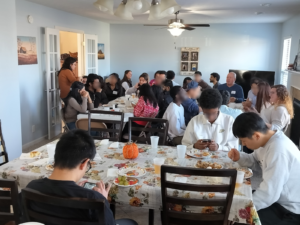The Discipleship Committee is in the process of talking with several ministries that have successful discipleship ministries with college students. The goal is to provide you with information about their particular model with the hope that if this model resonates with you and your ministry you will have someone to contact to further explore this model. So rather than general principles we hope to provide you with a personal contact for help in getting your discipleship ministry started or improved.
Discipleship Ministry Model Exchange: Session 1
College Minister: Tim Simpson
Contact Info: [email protected]
Start with the faithful. When I came to First Baptist Tuscaloosa, there were 2 or 3 small group Bible studies existing. I quickly realized that discipleship was one of our weaknesses. So I looked around at the men and women in our college ministry and identified the students that were faithful, available, and teachable (FAT). Shelley, our women’s minister to students, who became my wife the next year, started discipling some of the girls one on one. With the guys, I asked each of them if they would be interested in a 1-on-1 discipleship relationship with me. I started meeting with 5-6 guys individually that semester and I taught them 6 foundational things:
1. Share your testimony 4. Prayer
2. Assurance of salvation 5. How to study the Bible
3. The gospel 6. Jesus in the Old and New Testament
It took a lot of time but over that semester, we developed and equipped those students into our first small group Bible study leaders. At the end of our 1-on-1 discipleship time, we asked them to lead a small group in the fall. We communicated that we cannot reach our campuses alone; we must train and equip leaders to come alongside of us during their college years and for a lifetime of ministry. One of the main reasons they jumped on board with our strategy was because of our spiritual and personal investment in each of them.
In the fall, we started meeting with those leaders for a leader’s Bible study, and we would teach them the lesson they were going to teach their small groups. During this time, we would talk to them about recruiting students for their small groups, leadership principles, and how to lead a discussion based small group. On Sundays and at our mid-week worship service, we would introduce them to guests and help the guest connect with a small group. We’ve refined this process over the years by using a free giveaway after our mid-week worship service and using our small group leaders to greet the guests and pursue a follow up appointment that week. We’ve also added all of our small group Bible study times to our guest card so they can see all the options and sign up for a specific small group.
For the first few years, we assimilated all of the freshmen into small groups with upperclassmen. There were many benefits to this system including the mature students being mentors for the less mature ones. However one of the weaknesses occurred during their junior or senior years when those upperclassmen graduated, they were left feeling alone. A few years ago, we started a night when all of our Freshman Bible studies meet so they could know everyone in their class. During the first 2 weeks of the semester, we gather them into a large group so they will see other freshmen that are pursuing godliness too and be encouraged by this. After the large group gathering, we still divide them into small groups with upperclassmen leaders.
All of our small groups use the same material. We prefer to study a book of the Bible verse by verse through inductive Bible study. In the past two years, we’ve started teaching through the passage that they will study the next week at our midweek worship service so that we are not teaching too many things at once. It has helped to reinforce those truths and allow them to think on them more deeply and apply them to their daily lives.






